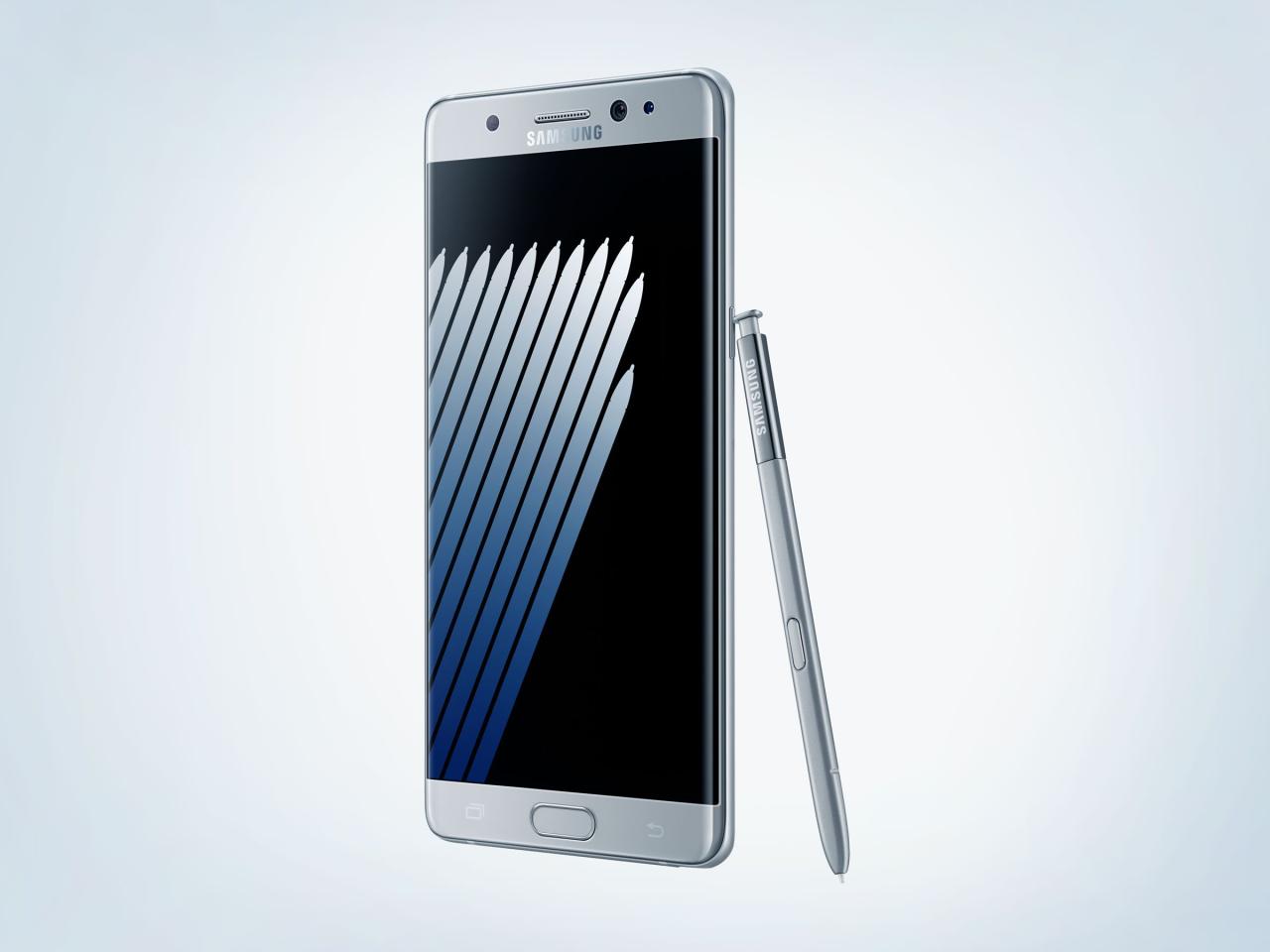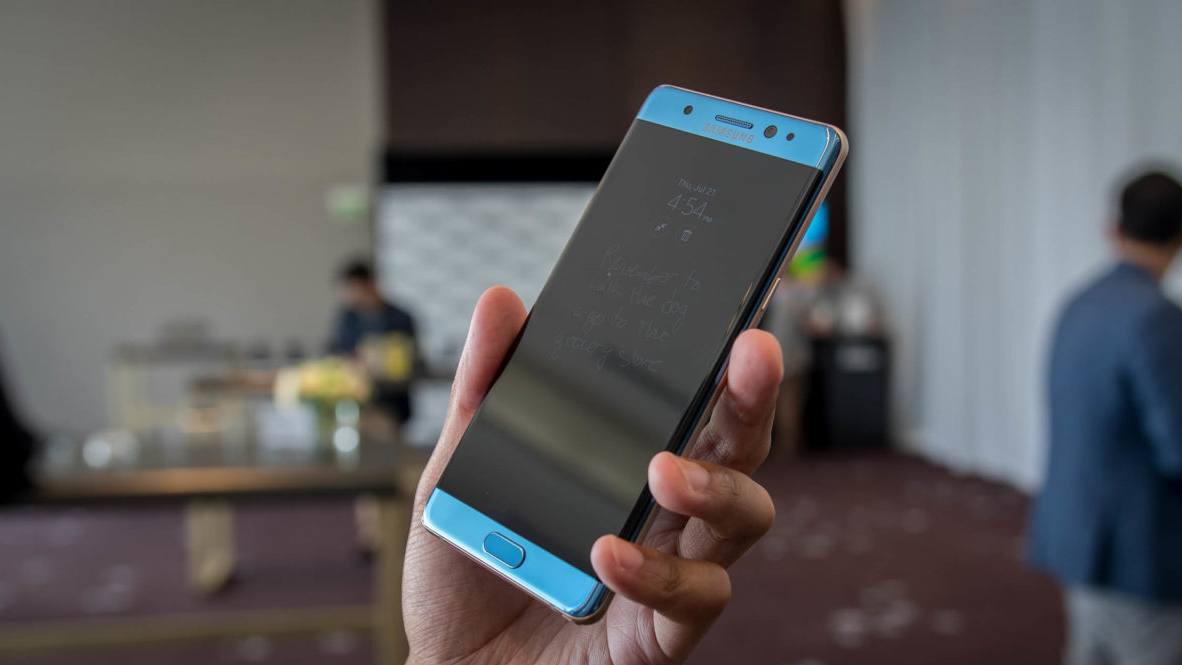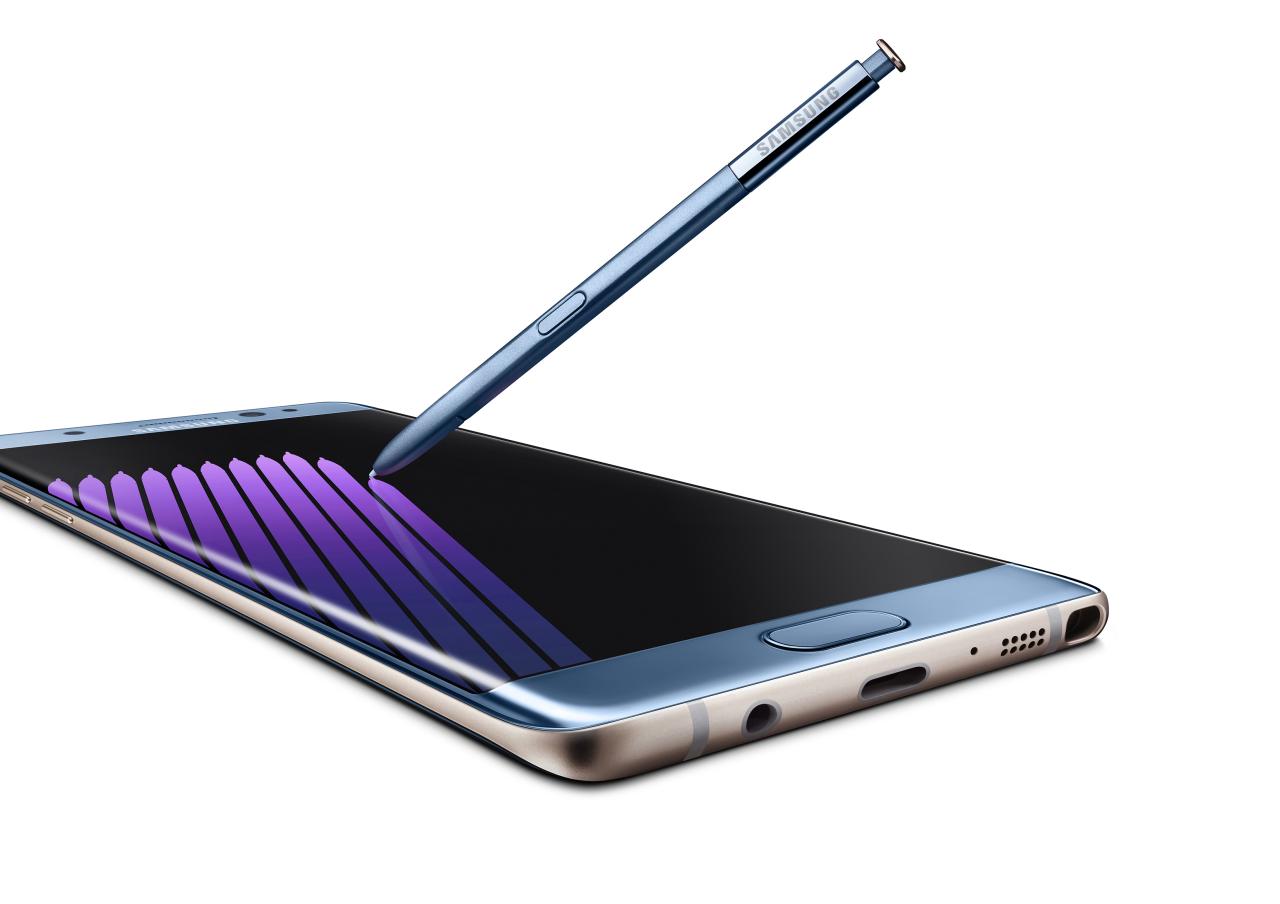Samsung note7 takes center stage as a groundbreaking smartphone that quickly captured the attention of tech enthusiasts and casual users alike. Launched in 2016, it boasted remarkable features like a stunning display, advanced camera capabilities, and the innovative S Pen, setting a new benchmark in the smartphone industry. However, its journey was not without turbulence, as it became infamous for battery issues that marred its reputation and led to major recalls, igniting a debate on safety standards in mobile technology.
Overview of Samsung Note7

The Samsung Note7 was a highly anticipated smartphone known for its combination of productivity features and premium design. It was aimed at users seeking both performance and functionality, with innovative features that set it apart from competitors in the market.
The Samsung Note7 was officially launched in August 2016, following its unveiling at the Samsung Unpacked event. This flagship device was equipped with a stunning 5.7-inch Quad HD Super AMOLED display and was powered by either the Qualcomm Snapdragon 820 or Exynos 8890 processor, depending on the region. One of the most notable features was its S Pen stylus, which allowed for precise navigation and note-taking, making it a popular choice among professionals and students alike.
Key Features and Specifications, Samsung note7
The Samsung Note7 boasted an impressive array of features and specifications that appealed to tech enthusiasts and everyday users. Among these were:
- Display: 5.7-inch Quad HD Super AMOLED, providing vibrant colors and deep contrasts.
- Camera: 12MP rear camera and 5MP front-facing camera, both equipped with advanced features for photography in various lighting conditions.
- Battery: 3,500 mAh battery with fast charging capabilities, designed to last throughout the day.
- Storage: Offered in 64GB internal storage with the option for microSD card expansion up to 256GB.
- Water and Dust Resistance: IP68 rating, making it resistant to water immersion and dust ingress.
- Security: Features included a fingerprint scanner and iris scanner for enhanced security options.
Release Timeline and Major Milestones
The launch and subsequent events surrounding the Samsung Note7 marked significant moments in the company’s history. The key milestones included:
- August 2, 2016: Official announcement and unveiling at the Samsung Unpacked event.
- August 19, 2016: Global release date, with initial sales exceeding expectations.
- September 2016: Reports of battery issues began to surface, leading to safety concerns.
- October 2016: Samsung announced a full recall of the Note7 due to safety hazards associated with battery defects.
Market Reception and User Reviews
Upon its release, the Samsung Note7 received largely positive reviews from both consumers and critics, highlighting its sleek design, powerful performance, and advanced features. Early adopters praised the device for its innovative S Pen capabilities and the quality of its display. However, the excitement was short-lived as the device became infamous for battery-related incidents.
The initial market reception was characterized by enthusiasm and high sales figures; however, this was soon overshadowed by negative press following the recall. Users expressed disappointment over the safety concerns, which led to a tarnished reputation for the Note series.
“The Samsung Note7 was a glimpse into the future of smartphones, blending high-end specs with user-friendly features, but its legacy was ultimately defined by the challenges it faced.”
Controversies Surrounding Samsung Note7

The launch of the Samsung Note7 was met with high expectations, but it quickly descended into a series of controversies that would tarnish the brand’s reputation. Central to these issues were significant battery problems that raised serious safety concerns, leading to global recalls and regulatory scrutiny.
Battery Issues and Recalls
The battery issues that plagued the Samsung Note7 primarily stemmed from overheating incidents, which resulted in fires and even explosions. These problems were traced back to the lithium-ion batteries used in the device. Initial reports in September 2016 indicated that some Note7 devices were catching fire during charging. Samsung’s response was swift; they initiated a recall of approximately 2.5 million devices within weeks. However, problems persisted even after the replacement devices were issued, leading to further recalls.
Samsung faced significant backlash when a second recall was announced in October 2016, affecting an additional 1 million devices. The company’s image took a severe hit, as consumers began to question the safety of their smartphones. The battery issues prompted not only public outcry but also legal actions from users who experienced damages due to the explosions.
Company Response and Brand Reputation Impact
Samsung’s handling of the Note7 crisis was marked by both proactive communication and reactive measures. The company established a dedicated team to manage the recalls and ensure customer safety. They provided extensive support to affected users, including full refunds and the option to exchange for other models.
However, despite these efforts, the damage to Samsung’s reputation was substantial. The incidents led to a decline in consumer trust, which was evident in sales figures and brand perception surveys. The Note7 debacle was cited as one of the largest product failures in consumer electronics history, and it forced Samsung to reassess its quality control processes.
Regulatory Actions in Various Countries
The safety issues surrounding the Note7 prompted regulatory bodies in several countries to take action. In the United States, the Consumer Product Safety Commission (CPSC) issued an official recall and advised consumers to power down their devices and return them.
Internationally, countries like Canada, Australia, and numerous European nations also enacted recalls. Some governments even prohibited the Note7 from being taken on flights due to safety concerns. The global nature of the crisis underscored the need for stricter safety regulations in the electronics industry, leading to increased scrutiny of lithium-ion batteries.
The Samsung Note7 controversy serves as a cautionary tale within the tech industry about the critical importance of product safety and quality assurance.
Technological Innovations of Samsung Note7
The Samsung Note7 emerged as a flagship device, showcasing a range of groundbreaking technological innovations that set it apart in the competitive smartphone market. With a blend of superior hardware and user-centric features, it aimed to elevate the mobile experience to new heights. This device not only focused on performance and design but also incorporated cutting-edge technology that appealed to both tech enthusiasts and casual users alike.
Unique Features of Samsung Note7
Among its most notable attributes, the Samsung Note7 introduced an array of features that distinguished it from rival smartphones. The combination of an elegant design with advanced technology, such as the following, played a significant role in its appeal:
- Water and Dust Resistance: The Note7 was IP68 rated, allowing it to withstand immersion in water and resist dust, which enhanced its durability for everyday use.
- Iris Scanner: Featuring an innovative iris recognition system, the Note7 provided users with an additional layer of security, enabling a convenient and secure unlocking method.
- Always On Display: This feature allowed users to view essential information without having to wake the device, promoting efficiency while conserving battery life.
Advancements in Camera Technology
The camera capabilities of the Samsung Note7 were a significant highlight, with advancements that catered to photography enthusiasts. The device featured a dual-pixel sensor in its rear camera, which significantly enhanced autofocus speed and overall image quality. Notable aspects include:
- 12 MP Rear Camera: The dual-pixel technology improved low-light performance, allowing users to capture sharper images in dim environments.
- Wide Aperture: An aperture of f/1.7 allowed for better light intake, resulting in more vibrant photos with improved depth of field effects.
- Dual-Video Recording: This feature enabled simultaneous recording from both the front and rear cameras, allowing for creative storytelling in videos.
Display Features
The display of the Samsung Note7 was another standout feature, offering immersive visuals that captivated users. The device utilized a Super AMOLED screen with the following advancements:
- 5.7-inch QHD Display: With a resolution of 2560 x 1440, the Note7 offered stunning clarity and color accuracy, making it ideal for media consumption and gaming.
- HDR Support: The HDR capability enhanced the dynamic range of videos and images, providing users with a richer viewing experience.
- Cornelia Gorilla Glass 5: The presence of Gorilla Glass 5 provided enhanced scratch resistance and durability, ensuring the display remained intact with everyday use.
S Pen Updates and Functionalities
The S Pen was a hallmark of the Note series, and the Note7 introduced several updates that expanded its functionality. The advancements in the S Pen included:
- Improved Pressure Sensitivity: With 4096 levels of pressure sensitivity, the S Pen allowed for more nuanced and precise drawing and writing experiences.
- Water-Resistant Design: The S Pen was designed to be water-resistant, aligning with the device’s overall durability and enhancing usability in various conditions.
- New Air Commands: The Note7 featured improved Air Command shortcuts, allowing for quicker access to apps and tools such as Screen Write and Smart Select, enhancing productivity.
Legacy and Impact of Samsung Note7

The Samsung Galaxy Note7, despite its early discontinuation, left a lasting imprint on both the brand and the smartphone industry. The fallout from the device’s battery issues forced Samsung to reevaluate its product development processes, safety measures, and corporate strategies. This incident not only altered consumer trust but also reshaped the landscape for future smartphones, emphasizing the need for robust quality control and innovation.
The Note7 played a significant role in redefining Samsung’s approach to product strategy. Following the incident, the company implemented more rigorous testing protocols and adopted a more cautious approach towards innovation, ensuring that safety would never again take a backseat to features. This shift has led to a more structured and transparent development environment, where every product undergoes extensive evaluation before hitting the market.
Influence on Subsequent Smartphone Designs
The legacy of the Note7 is evident in the design and manufacturing of subsequent smartphone models. The need for enhanced safety and reliability has become a priority for manufacturers worldwide, influencing several key design aspects. Notably, the following elements have gained importance:
- Battery Safety Protocols: Manufacturers have adopted stricter battery testing standards, including the implementation of multi-point inspections and the use of advanced battery management systems to prevent overheating.
- Consumer Transparency: Companies are now more transparent about their product testing procedures, offering consumers insights into safety measures and the design processes behind new smartphones.
- Emphasis on Return Policies: The Note7 incident prompted a shift towards more flexible return policies, allowing consumers to return faulty devices without penalty, thereby building trust in the brand.
- Focus on User Feedback: Manufacturers have started prioritizing consumer feedback in the design phase, ensuring that user concerns regarding safety and functionality are addressed early in the development cycle.
Lessons Learned from the Note7 Incident
The Note7 experience provided critical lessons for Samsung that have implications for the entire smartphone industry. These lessons highlight the importance of safety, quality control, and effective communication in device development. Below is a table summarizing these lessons:
| Lesson | Description |
|---|---|
| Prioritize Safety in Design | Integrate safety features from the outset of the design process to mitigate risks associated with device usage. |
| Implement Rigorous Testing | Conduct comprehensive testing, including stress tests and real-world usage scenarios, to identify potential failures before product launch. |
| Enhance Quality Control Measures | Establish stringent quality assurance standards that include regular audits and checks throughout the manufacturing process. |
| Communicate Proactively | Maintain open lines of communication with consumers and stakeholders, providing timely updates on safety concerns and product recalls. |
| Adapt to Consumer Feedback | Utilize consumer insights to shape product features and improvements, ensuring that user needs are prioritized in development. |
The Note7 incident has fundamentally changed the way smartphone manufacturers approach design, safety, and consumer trust. By learning from past mistakes, the industry is better equipped to create devices that prioritize user safety while still delivering innovative features.
Top FAQs
What led to the recall of the Samsung note7?
The recall was primarily due to battery defects that caused overheating and fires, raising serious safety concerns among users.
How did Samsung respond to the note7 incidents?
Samsung issued an initial recall and subsequent replacement programs, ultimately discontinuing the device to ensure consumer safety.
What were some key features of the Samsung note7?
The note7 featured a 5.7-inch Super AMOLED display, an advanced camera system, and the versatile S Pen, making it a standout device at its launch.
Did the note7 impact Samsung’s brand reputation?
Yes, the controversies surrounding the note7 significantly affected Samsung’s brand perception, leading to increased scrutiny and changes in their manufacturing processes.
What lessons were learned from the Samsung note7 incident?
Key lessons included the importance of rigorous testing protocols, transparent communication with consumers, and the need for enhanced safety measures in device design.
The samsung galaxy s10+ has gained popularity for its stunning display and powerful performance. With a versatile camera system and sleek design, it caters to both casual users and tech enthusiasts alike. This flagship device stands out in the crowded smartphone market, making it a top choice for anyone seeking a premium experience.
If you’re looking for an impressive device, the samsung galaxy s10plus delivers exceptional features that enhance everyday use. Its expansive screen and robust battery life provide a seamless experience, making multitasking effortless. This model not only embodies sophistication but also integrates cutting-edge technology, perfect for the modern user.